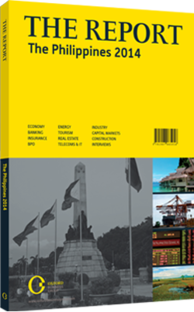OBG talks to Leonardo Dayao, President, Puregold Price Club

Interview: Leonardo Dayao
How do you see the domestic retail landscape evolving in terms of modern versus traditional retailers?
LEONARDO DAYAO: On average the penetration percentage of modern retail in the Philippines stands in the mid-20s; however, this is inclusive of the countryside. If one refers only to Metro Manila and the other urban centres, penetration is much higher, at around 50%. As a result, Metro Manila is well served by modern retail trade, with some remaining opportunities to serve at the neighbourhood level. However, in rural areas, informal retailing through sari-sari (convenience) stores will continue to be the main source of merchandise for lower income groups or the daily wage earners as they provide proximity, convenience and credit. Supermarkets by themselves do not provide credit, with the exception of credit card services. A consumer can only secure buying merchandise using credit through the sari-sari store. Therefore, we see the sari-sari store still very much a major part of the retail landscape.
What have been the challenges for penetration of modern retail in Metro Manila, and what are the opportunities for expansion into provincial areas?
DAYAO: The price of land in Metro Manila has gone up substantially, whereas in the provinces it remains reasonable. The principal development in Metro Manila is the development of mixed-use formats, which include malls, residences, offices and business process outsourcing centres. However, for stand-alone malls, few areas remain untapped, mostly centred in Quezon City, which enjoys a large area and population. As the industry expands into the provinces, particularly into the Visayas and Mindanao, the challenges for penetration will depend on the format employed. In a green field area we usually open first with a hypermarket as it not only gives a good impression but offers a one-stop shop in traditionally undeveloped markets, namely addressing the needs of the immediate community, from sari-sari stores to end-consumers. The hypermarket in these new areas can then serve as a hub to then open smaller formats in the surrounding markets – be it another town or within the same city – depending on the size of the market.
The criteria for expansion of outlets outside of Metro Manila centres around population size and the presence of fairly stable means of livelihood. Each of these serves to identify store locations. The presence or non-presence of a national brand is also a major factor to consider. Major urban centres invariably have the national brands, but secondary tier cities do not yet host any. This creates a very good opportunity for entering players, due to a first mover advantage. For any retailer, it is preferable to be in a smaller market in the absence of other players rather than share a fairly big market with a dozen other retailers. In order to accelerate expansion, the trend will likely be acquisitions as it is difficult to develop one from the ground up.
While lower prices remain a priority for consumers, other considerations come into play to increase the consumer base, including customer service and accessibility, particularly given the rise in transportation costs between the customer and the store. In addition, time is also important and directly connected with accessibility, particularly in cities where people are busy; in the provinces this is less significant. Similarly, while consumers in the provinces are mostly price-sensitive, customers in urban areas regard lower prices to be as vital as accessibility and customer service.
In what way are retailers providing assistance to the development of sari-sari stores in rural areas?
DAYAO: We are looking to help sari-sari stores progress in their professionalisation. Primarily, assistance revolves around merchandising display, whether through renovation or improvements to the appearance of their stores. Second is to give them an idea on what they should have in their stores to increase their margins and turnover. Owners are also encouraged to attend seminars on personal finance and rudimentary accountancy so they know how to maximise their investments.
You have reached the limit of premium articles you can view for free.
Choose from the options below to purchase print or digital editions of our Reports. You can also purchase a website subscription giving you unlimited access to all of our Reports online for 12 months.
If you have already purchased this Report or have a website subscription, please login to continue.

